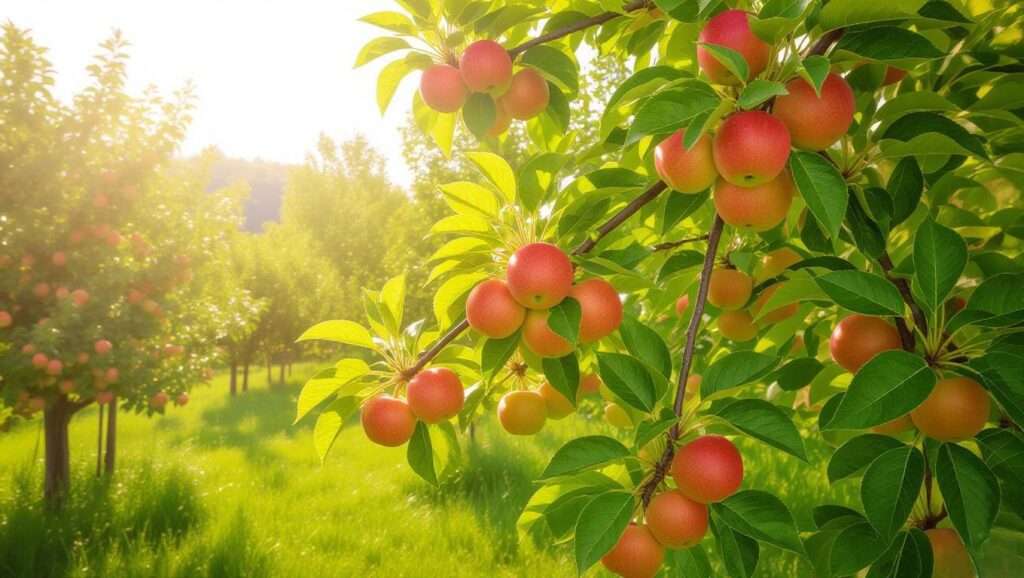Imagine sinking your teeth into a crisp, juicy Honeycrisp apple, its sweet-tart flavor bursting with every bite, picked straight from your own backyard tree. Growing a Honeycrisp apple tree is not just about cultivating fruit; it’s about creating moments of joy, savoring homegrown goodness, and nurturing a legacy that thrives for years. Whether you’re a novice gardener or a seasoned orchardist, this guide will empower you with expert-backed strategies to ensure your Honeycrisp tree flourishes. From planting to harvesting, we’ll cover everything you need to know to achieve abundant, delicious yields. Let’s dive into the art and science of Honeycrisp care! 🌱
With decades of horticultural expertise and insights from successful growers, this comprehensive guide promises actionable advice tailored to the unique needs of Honeycrisp apple trees. By the end, you’ll have the confidence to plant, nurture, and harvest apples that rival those from any orchard. Ready to grow your own? Let’s get started!
1. Why Choose a Honeycrisp Apple Tree? 🍏
Honeycrisp apples have captured hearts worldwide for their unparalleled texture and flavor. But what makes this variety so special, and why should you choose it for your garden?
1.1 The Unique Appeal of Honeycrisp Apples
Developed by the University of Minnesota in 1991, the Honeycrisp apple is celebrated for its explosive crunch, balanced sweet-tart taste, and vibrant red-and-yellow coloring. Its cells are larger than those of other apples, giving it a satisfying juiciness that makes it perfect for eating fresh, baking pies, or pressing into cider. According to a 2023 consumer survey by the U.S. Apple Association, Honeycrisp consistently ranks among the top varieties for flavor and versatility. Whether you’re snacking or cooking, this apple delivers.
1.2 Benefits of Growing Your Own Honeycrisp Tree
Growing a Honeycrisp apple tree at home offers more than just delicious fruit. It’s a cost-effective alternative to store-bought apples, which can cost $2–$4 per pound. A single mature tree can yield 50–100 pounds of apples annually, saving you hundreds over its lifetime. Plus, home gardening reduces your carbon footprint by minimizing reliance on commercially shipped produce. Beyond economics, there’s an emotional reward in watching your tree grow from a sapling to a fruit-bearing marvel, providing shade, beauty, and sustenance for your family.
Expert Insight: “Honeycrisp is a game-changer for home orchards,” says Dr. Emily Larson, a horticulturist with 20 years of fruit tree research. “Its adaptability and crowd-pleasing flavor make it a must-have for any gardener.”
2. Understanding Honeycrisp Apple Tree Requirements 🌱
To grow a thriving Honeycrisp apple tree, you need to understand its environmental and soil preferences. Let’s break down the essentials.
2.1 Ideal Climate and Hardiness Zones
Honeycrisp apple trees thrive in USDA Hardiness Zones 4–7, where winters are cold enough to meet their chilling requirements (800–1,000 hours below 45°F) but not so harsh as to damage the tree. These zones cover much of the U.S., from the Midwest to the Pacific Northwest. If you’re in a marginal zone, such as Zone 8, you can still succeed with extra care, like mulching to protect roots during hot summers. Always check your local climate data to confirm compatibility.
2.2 Soil and Site Selection
Honeycrisp trees prefer well-drained, loamy soil with a pH between 6.0 and 7.0. Test your soil using a home kit (available for $10–$20 at garden centers) to ensure it meets these conditions. If your soil is too acidic, add lime; if too alkaline, incorporate sulfur. Choose a site with 6–8 hours of direct sunlight daily, as shade can stunt growth and reduce fruit quality. Space trees 15–20 feet apart to promote airflow, which helps prevent fungal diseases. Avoid low-lying areas where frost can settle, as Honeycrisp trees are sensitive to late spring frosts.
Tip: To test soil pH at home, mix 1 part soil with 1 part distilled water, insert a pH meter, and read the results. Repeat in multiple spots for accuracy.
3. Planting Your Honeycrisp Apple Tree 🌿
Proper planting sets the foundation for a healthy tree. Here’s how to do it right.
3.1 Choosing the Right Tree
When selecting a Honeycrisp apple tree, you’ll choose between bare-root and container-grown options. Bare-root trees are more affordable ($20–$40) and easier to ship, but they require immediate planting in early spring. Container-grown trees ($40–$80) offer flexibility for planting in spring or fall but may experience transplant shock. Opt for trees grafted onto disease-resistant rootstocks like M26 or M7, which improve vigor and pest resistance. Purchase from reputable nurseries, such as Stark Bro’s or local cooperative extensions, to ensure quality.
3.2 Step-by-Step Planting Guide
- Timing: Plant in early spring (March–April) or fall (September–October) when the tree is dormant.
- Prepare the Hole: Dig a hole twice as wide and as deep as the root ball (about 2–3 feet wide).
- Amend Soil: Mix native soil with compost (50:50 ratio) to boost nutrients and drainage.
- Position the Tree: Place the tree so the graft union (the bulge where the scion meets the rootstock) is 2–3 inches above ground. Spread roots evenly.
- Backfill and Water: Fill the hole, tamp down soil, and water thoroughly (1–2 gallons).
- Stake the Tree: Use a stake to stabilize young trees against wind for the first 1–2 years.
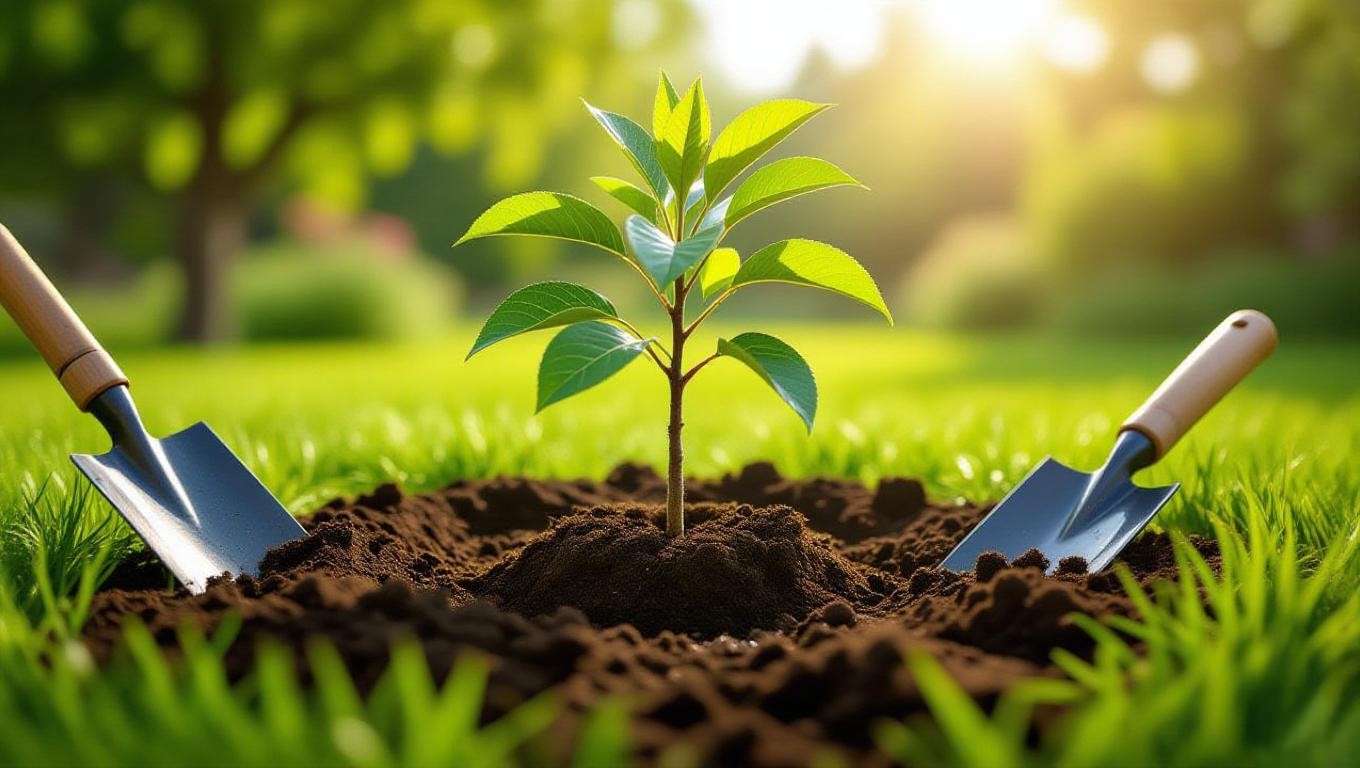
3.3 Pollination Requirements
Honeycrisp apple trees are not self-pollinating, so you’ll need a compatible pollinator variety, such as Gala, Fuji, or McIntosh, planted within 50 feet. These varieties bloom at similar times, ensuring successful cross-pollination. If space is limited, consider grafting a pollinator branch onto your Honeycrisp tree. Bees are essential for pollination, so avoid pesticide use during bloom season (typically April–May).
Example: Sarah, a home gardener in Michigan, planted her Honeycrisp alongside a Gala tree. By year three, she harvested 60 pounds of apples, thanks to proper pollination and care.
4. Caring for Your Honeycrisp Apple Tree 🌞
Consistent care is key to a productive tree. Let’s explore watering, fertilizing, and pruning.
4.1 Watering Needs
Young Honeycrisp trees need 1–2 inches of water weekly during their first two years, especially during dry spells. Use a soaker hose or drip irrigation to deliver water directly to the root zone, avoiding leaf wetness that can promote disease. Established trees are more drought-tolerant but still benefit from occasional deep watering during prolonged heat. Check soil moisture by digging 2 inches down; if dry, water immediately. Overwatering can lead to root rot, so ensure proper drainage.
4.2 Fertilizing for Optimal Growth
Apply a balanced fertilizer (10-10-10) in early spring, just before bud break. For a young tree, use 1 pound of fertilizer, increasing to 2–3 pounds for mature trees. Spread it evenly around the drip line (the area under the canopy’s edge) and water thoroughly. Organic options like composted manure or fish emulsion work well for eco-conscious gardeners. Avoid over-fertilizing, as excess nitrogen can lead to lush foliage at the expense of fruit.
4.3 Pruning and Training
Pruning shapes the tree, improves airflow, and boosts fruit production. In late winter, when the tree is dormant, remove dead, damaged, or crossing branches. For young trees, train to a central leader system (one main trunk with tiered branches) to maximize sunlight exposure. In summer, lightly prune to remove water sprouts (vigorous vertical shoots). Aim to open the canopy, allowing light to reach inner branches.

Expert Tip: Follow this pruning calendar:
- Late Winter: Structural pruning for shape and health.
- Early Summer: Remove water sprouts and thin crowded branches.
- Post-Harvest: Clean up fallen leaves to prevent disease.
5. Protecting Your Honeycrisp Apple Tree from Pests and Diseases 🐞
Honeycrisp trees face threats from pests and diseases, but proactive measures can keep them healthy.
5.1 Common Pests
- Apple Maggots: These flies lay eggs in fruit, causing dimpling. Use sticky traps or kaolin clay sprays to deter them.
- Codling Moths: Larvae tunnel into apples, ruining crops. Deploy pheromone traps and remove fallen fruit to break their life cycle.
- Aphids: These sap-suckers weaken leaves. Introduce ladybugs or spray neem oil for organic control.
Integrated pest management (IPM) combines monitoring, traps, and minimal pesticide use for sustainable results.
5.2 Common Diseases
- Fire Blight: A bacterial disease causing blackened, wilted shoots. Prune affected areas 12 inches below symptoms and sterilize tools between cuts.
- Apple Scab: Fungal spots on leaves and fruit. Apply sulfur-based fungicides in spring and remove leaf litter.
- Powdery Mildew: White coating on leaves. Improve airflow through pruning and use fungicides if needed.
Choose resistant rootstocks and practice sanitation (e.g., clearing debris) to minimize disease risk.
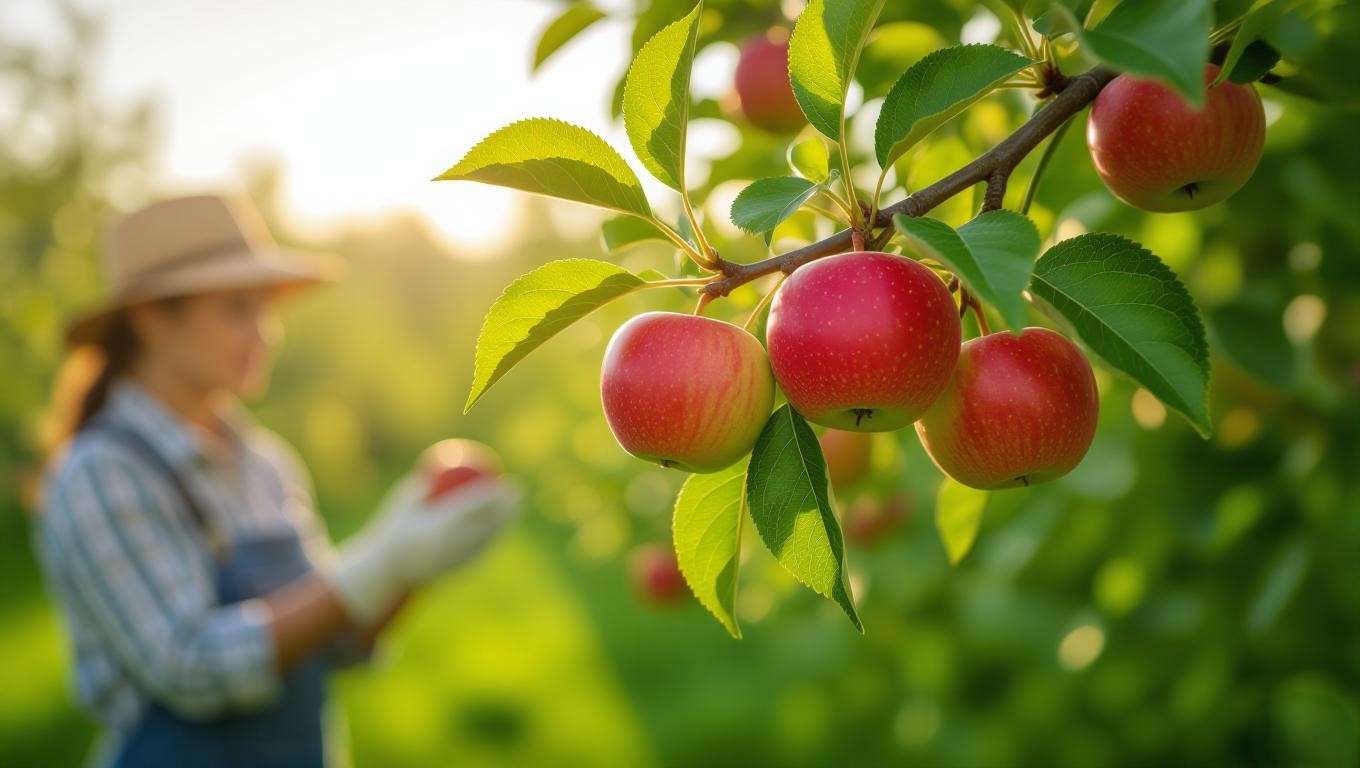
5.3 Environmental Stressors
Protect your tree from frost by covering it with burlap during late spring freezes. Mulch with 2–4 inches of wood chips to retain moisture and regulate soil temperature. In windy areas, secure stakes or windbreaks to prevent trunk damage.
Case Study: John, an Oregon gardener, saved his Honeycrisp from apple scab by improving airflow through pruning and applying organic sulfur sprays, resulting in a healthy 80-pound harvest.
6. Harvesting and Storing Honeycrisp Apples 🍎
Nothing compares to the satisfaction of harvesting your own Honeycrisp apples. Timing and technique are critical to ensure top-quality fruit that lasts.
6.1 When and How to Harvest
Honeycrisp apples are typically ready for harvest between late September and early October, depending on your region. Look for these signs of ripeness:
- Color: The fruit should have a vibrant red blush over a yellow background.
- Firmness: Apples should feel firm but yield slightly to gentle pressure.
- Taste Test: Sample an apple; it should be crisp with a sweet-tart balance.
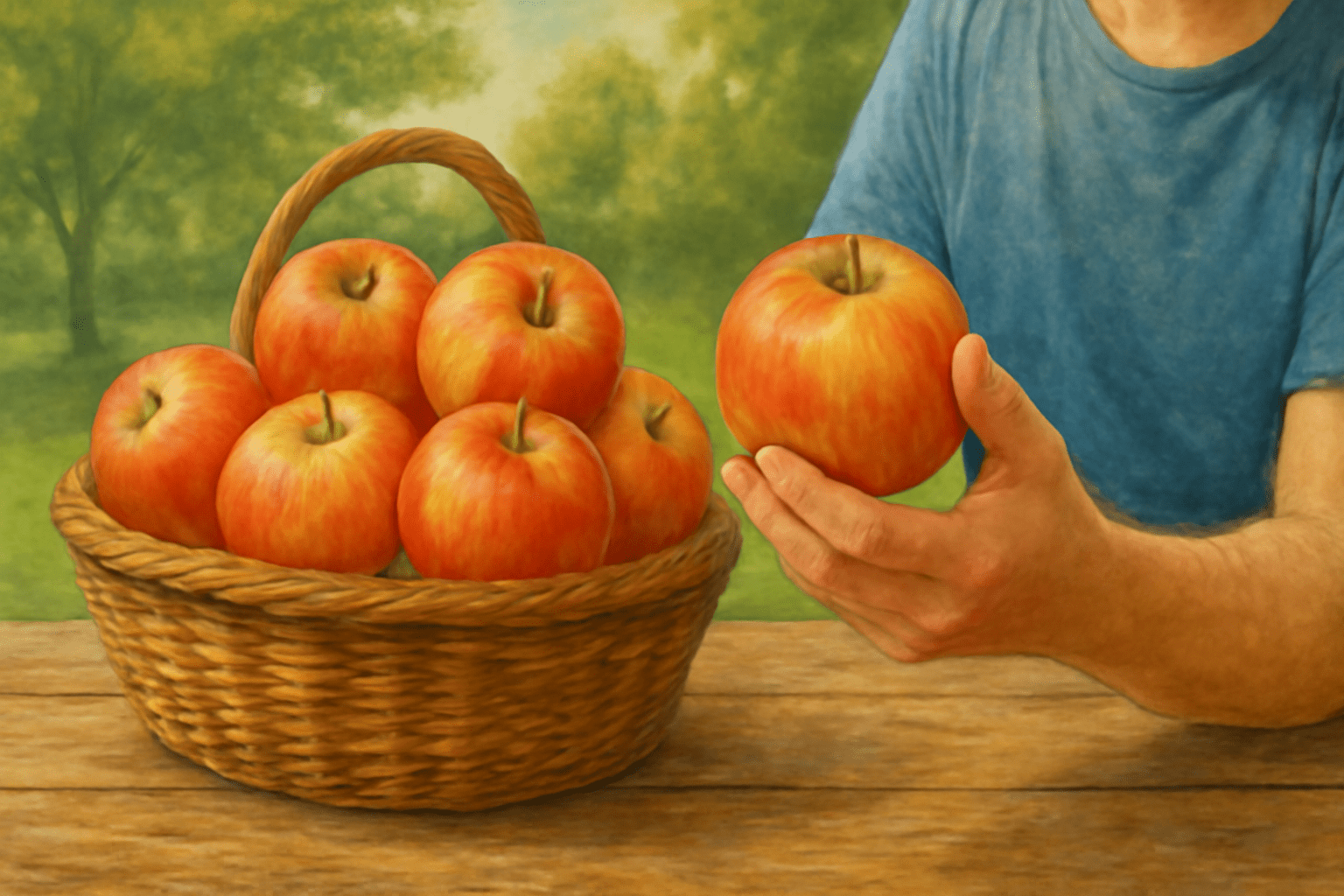
To harvest, gently twist or roll the apple upward to detach it from the branch, keeping the stem intact to prevent rot. Avoid dropping apples, as bruising reduces storage life. Use a picking bag or basket to collect fruit, and handle them carefully to maintain quality.
6.2 Storing Your Apples
Proper storage extends the life of your Honeycrisp apples for months. Store them at 32–35°F in a high-humidity environment, such as a refrigerator crisper drawer or a cool basement. Wrap each apple in newspaper or place them in perforated plastic bags to prevent moisture loss and ethylene gas buildup, which can hasten ripening. Check stored apples weekly for signs of spoilage and remove any affected fruit promptly. With proper care, Honeycrisps can last 3–4 months.
For surplus apples, consider preserving them through:
- Canning: Make applesauce or pie filling.
- Drying: Create apple chips for healthy snacks.
- Cider: Press apples for fresh or fermented cider.
Pro Tip: Try this simple Honeycrisp apple pie recipe: Mix 6 cups sliced Honeycrisp apples with ¾ cup sugar, 2 tbsp flour, 1 tsp cinnamon, and a pinch of nutmeg. Bake in a pie crust at 375°F for 45–50 minutes. Enjoy the sweet-tart perfection! 🥧
7. Troubleshooting Common Honeycrisp Apple Tree Issues ⚠️
Even with the best care, issues can arise. Here’s how to diagnose and fix common problems to keep your tree thriving.
7.1 Poor Fruit Production
If your Honeycrisp tree isn’t producing fruit, consider these causes:
- Inadequate Pollination: Ensure a compatible pollinator tree (e.g., Gala or Fuji) is nearby. If bees are scarce, try hand-pollination with a small brush during bloom season.
- Nutrient Deficiencies: Test soil for nitrogen, phosphorus, or potassium imbalances. Apply a balanced fertilizer if needed.
- Improper Pruning: Over-pruning can remove fruiting spurs. Focus on selective cuts to maintain productive branches.
Solutions include installing a beehive to attract pollinators, conducting a soil test, and consulting a pruning guide to refine your technique.
7.2 Leaf Drop or Yellowing
Yellowing leaves or premature leaf drop can signal:
- Overwatering: Check soil drainage and reduce watering if the soil feels soggy.
- Pests: Inspect for aphids or spider mites, which can be controlled with neem oil.
- Disease: Look for signs of apple scab or powdery mildew and treat accordingly.
To diagnose, examine leaves for spots or pests and test soil moisture. Adjust care practices and monitor for improvement over 1–2 weeks.
7.3 Stunted Growth
If your tree isn’t growing vigorously, investigate:
- Root Issues: Compacted soil or circling roots (common in container-grown trees) can restrict growth. Loosen soil or gently spread roots during planting.
- Weed Competition: Remove weeds within a 3-foot radius of the tree base to reduce competition for nutrients.
- Poor Soil: Amend with organic matter to improve fertility and drainage.
Aerate the soil with a garden fork and apply mulch to suppress weeds and retain moisture.
FAQ Section:
- Why isn’t my Honeycrisp tree fruiting? Lack of pollination or young tree age (trees take 3–5 years to bear fruit) are common culprits. Ensure a pollinator is nearby and be patient.
- How do I know if my tree is healthy? Look for glossy green leaves, steady growth (6–12 inches annually), and no signs of disease or pest damage.
8. Advanced Tips for Maximizing Honeycrisp Yields 🚀
Ready to take your Honeycrisp apple tree to the next level? These advanced techniques can boost fruit quality and quantity.
- Fruit Thinning: In early summer, remove excess apples (aim for one per cluster, spaced 6–8 inches apart) to improve fruit size and prevent branch breakage. This also reduces biennial bearing, where trees produce heavily one year and sparsely the next.
- Espalier or Dwarf Trees: For small spaces, train your Honeycrisp as an espalier (a flat, wall-hugging shape) or choose a dwarf rootstock (e.g., M9) for container growing. These methods maximize space and yield.
- Companion Planting: Plant pest-repelling companions like marigolds, chives, or nasturtiums near your tree to deter aphids and other insects naturally.
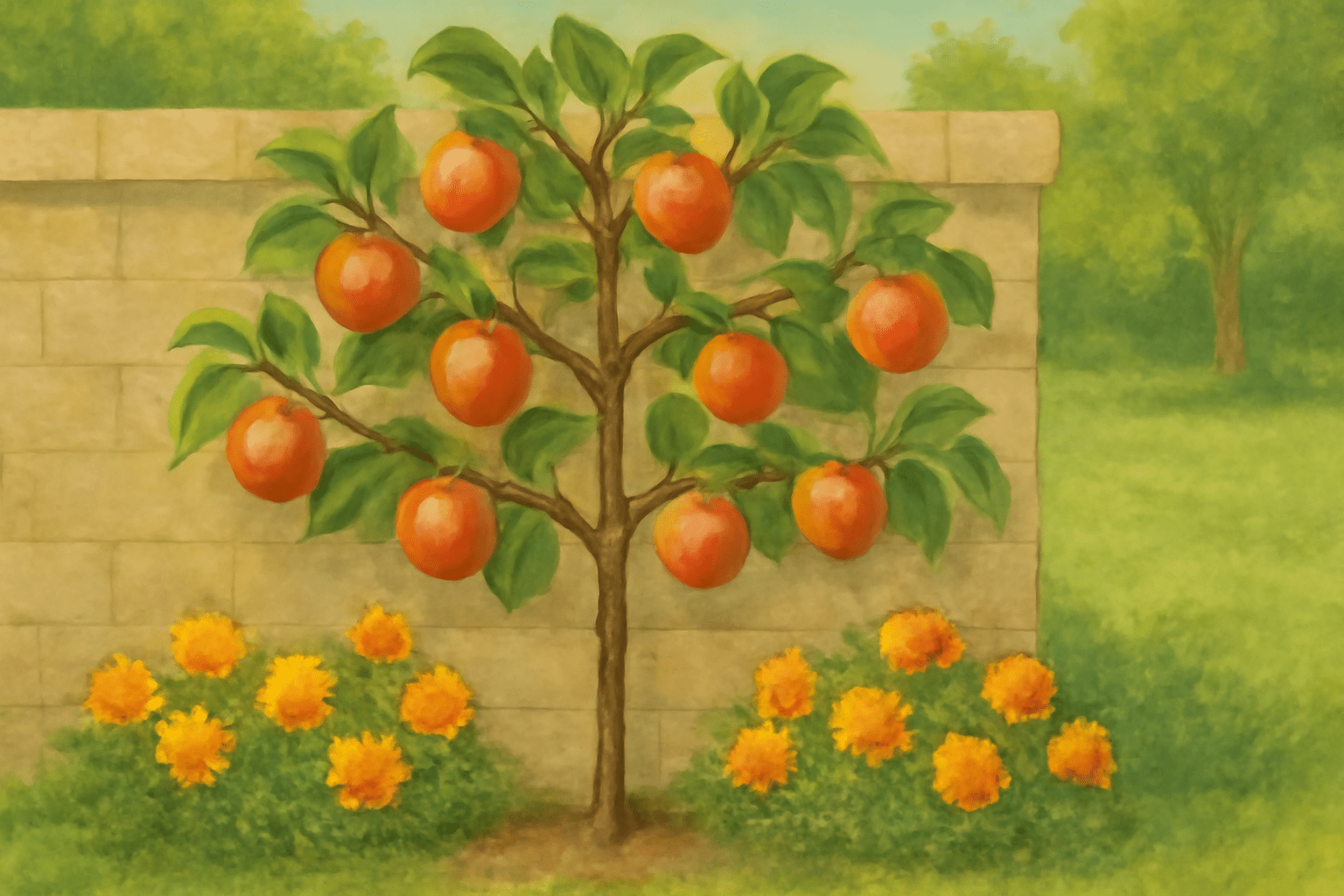
Expert Insight: “Thinning is a game-changer,” says orchard manager Tom Reynolds. “By removing smaller apples early, you channel the tree’s energy into producing larger, sweeter fruit.”
9. Conclusion: Your Path to a Thriving Honeycrisp Apple Tree 🎉
Growing a Honeycrisp apple tree is a rewarding journey that combines patience, care, and a touch of artistry. By choosing the right site, planting correctly, and providing consistent care—watering, fertilizing, pruning, and pest management—you’ll set your tree up for success. Protect it from pests and diseases, troubleshoot issues promptly, and use advanced techniques to maximize your harvest. Soon, you’ll be enjoying crisp, juicy apples straight from your backyard. Start today, and let your Honeycrisp tree become a centerpiece of your garden! Share your progress in the comments or explore our related articles on fruit tree care for more tips. 🌳
10. FAQs 🌟
- How long does it take for a Honeycrisp apple tree to bear fruit? Typically 3–5 years for standard trees, 2–3 years for dwarf varieties.
- Can I grow a Honeycrisp tree in a container? Yes, use a dwarf rootstock and a 15–20-gallon pot with excellent drainage.
- What are the best companion trees for Honeycrisp pollination? Gala, Fuji, or McIntosh are ideal due to overlapping bloom times.
- How do I protect my tree from deer or rodents? Use tree guards or fencing for deer and wrap the trunk with hardware cloth for rodents.
- What should I do if my tree shows signs of disease? Identify symptoms, prune affected areas, and apply appropriate treatments (e.g., fungicides for apple scab).

